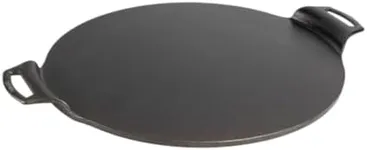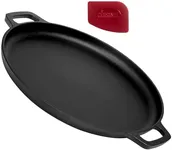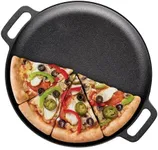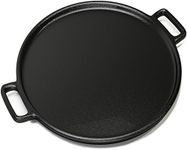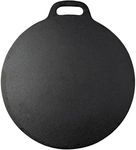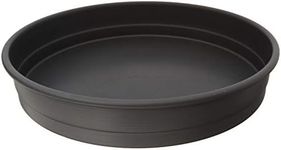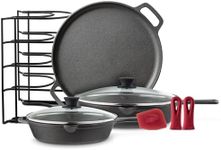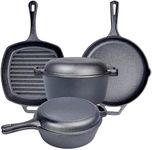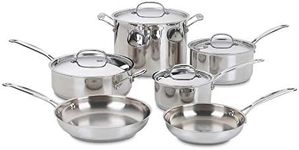Buying Guide for the Best Cast Iron Pizza Pans
Choosing the right cast-iron pizza pan can make a significant difference in your pizza-making experience. Cast-iron pans are known for their durability, heat retention, and ability to create a crispy crust. When selecting a cast-iron pizza pan, it's important to consider several key specifications to ensure you get the best fit for your needs. Here are the main factors to consider and how to navigate them.SizeThe size of the cast-iron pizza pan is crucial because it determines how much pizza you can make at once. Sizes typically range from 10 inches to 16 inches in diameter. If you often cook for a large family or entertain guests, a larger pan (14-16 inches) would be ideal. For smaller households or personal use, a 10-12 inch pan should suffice. Consider the size of your oven as well to ensure the pan fits comfortably.
WeightCast-iron pans are generally heavy, but the weight can vary. Heavier pans (around 10-15 pounds) offer better heat retention and even cooking, which is great for achieving a perfect crust. However, they can be cumbersome to handle. Lighter pans (5-10 pounds) are easier to maneuver but may not retain heat as well. Choose a weight that you can comfortably handle while still providing the cooking performance you need.
Pre-seasoned vs. UnseasonedPre-seasoned pans come with a layer of seasoning that makes them ready to use right out of the box and provides a non-stick surface. Unseasoned pans require you to season them yourself, which involves coating them with oil and baking them. Pre-seasoned pans are convenient and save time, making them a good choice for beginners. If you prefer to control the seasoning process or enjoy the ritual, an unseasoned pan might be more suitable.
HandlesHandles on a cast-iron pizza pan can make it easier to lift and maneuver, especially when dealing with a hot, heavy pan. Some pans come with dual handles, while others have a single long handle. Dual handles provide better balance and control, which is useful for larger, heavier pans. A single long handle can be easier to grip but may not offer the same level of stability. Consider your comfort and how you plan to use the pan when choosing the handle style.
Edge DesignThe edge design of the pan can affect the type of pizza you make. Pans with higher, sloped edges are great for deep-dish pizzas, as they can hold more toppings and sauce. Flat or low-edged pans are better for thin-crust or Neapolitan-style pizzas, allowing for easy sliding in and out of the oven. Think about the type of pizza you enjoy making most often and choose an edge design that complements it.
MaintenanceCast-iron pans require specific maintenance to keep them in good condition. They need to be cleaned by hand, dried immediately, and occasionally re-seasoned to maintain their non-stick surface. Some pans come with maintenance instructions or even special coatings to make care easier. If you prefer low-maintenance cookware, look for pans with user-friendly care requirements. If you're willing to invest time in upkeep, any cast-iron pan will serve you well with proper care.
